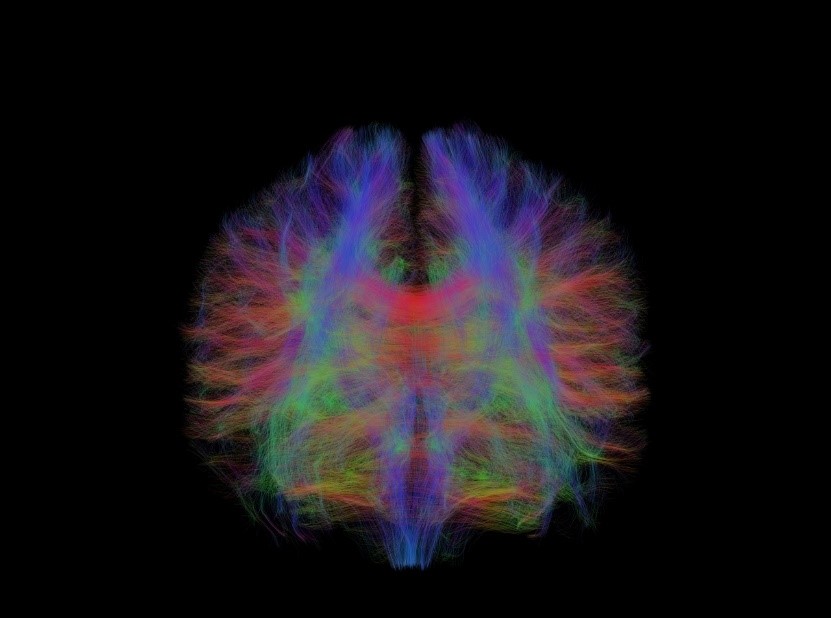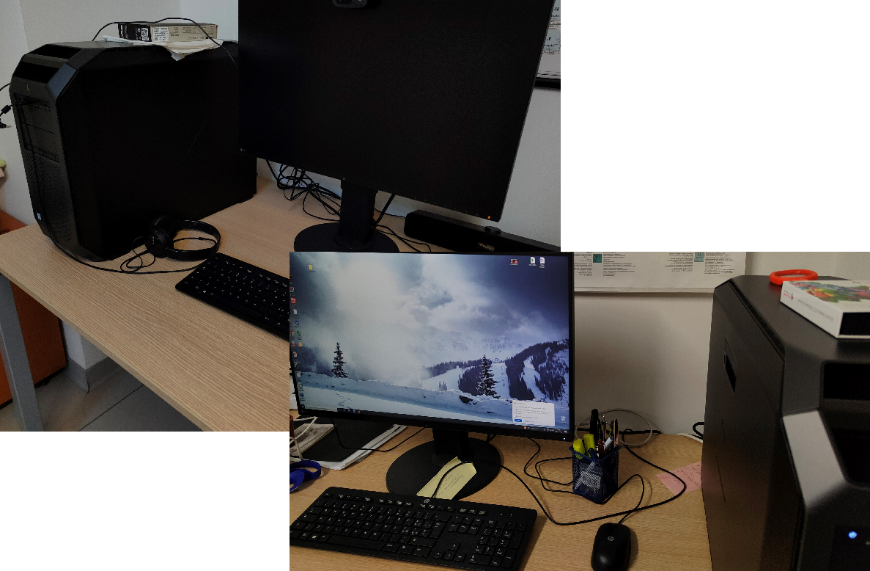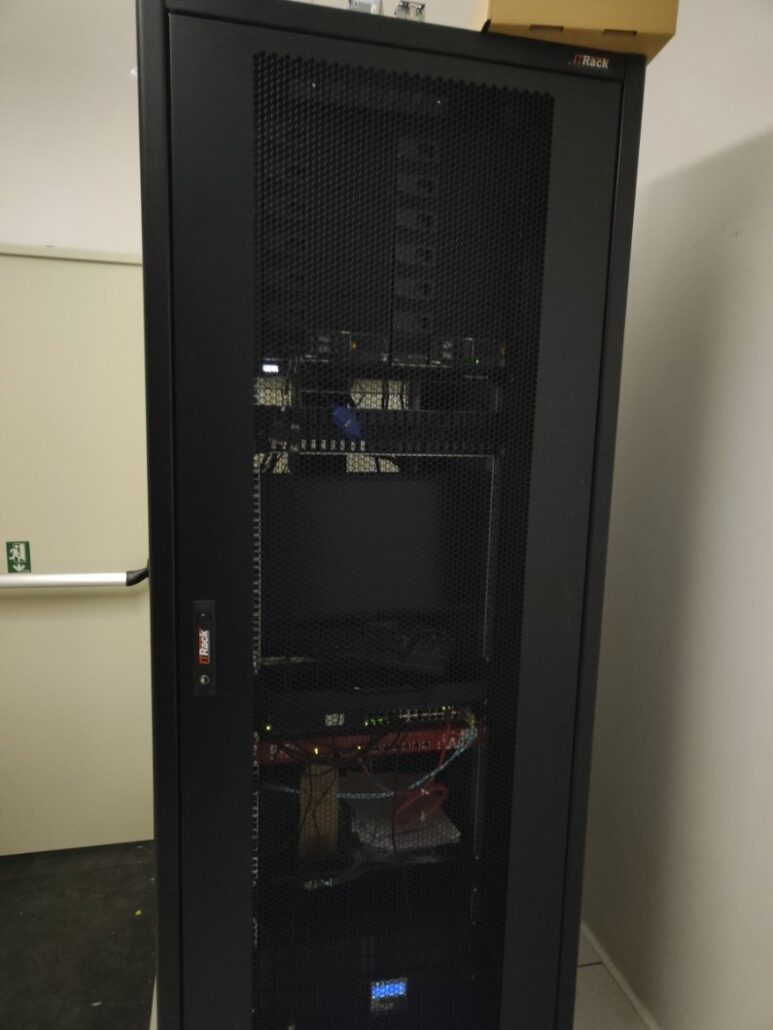IT infrastructure for data storage and processing on a centralized high-performance platform, and for decentralized processing on graphics workstations. Being an IT infrastructure, the devices do not integrate any specific experimental techniques.

Name of the contact point: Giulia Festa Name of the laboratory: Physics for Cultural Heritage at CREF
The high-performance graphics workstations allow quantitative analysis of images and 3D rendering of the results, thanks to the GPU engine. The workstations include graphical and scientific analysis software for applications in the study of the properties of materials and artefacts

SPECIFICHE TECNICHE
2 workstation HP Z8 G4, ciascuna configurata con GPU Nvidia Quadro RTX, doppio Xeon Gold 8Core, RAM 256 GB, HD 14 TB, 2 monitor grafici 27”
Server and storage
Name of the contact point: Federico Giove Name of the laboratory: CED @ CREF
| The high-performance blade-based (expandable) server integrates an enterprise-class chassis with highly redundant, hot-swappable communication, storage, power, and cooling modules. The server has a high-performance storage space based on SAN with fiber optic fabric. It guarantees a scalable computing environment for current and future needs, it is modular for shared use, and it is secure thanks to the local network separated from the production environments. Redundancy and remote management and monitoring tools help maintaining high reliability and availability. The network infrastructure allows encrypted remote access to data (over VPN). The server is configured as scientific computing platform, with emphasis on shared use by multiple users and in particular on the processing of quantitative images, which requires a lot of working memory and fast mass storage. |

TECHNICAL SPECIFICATIONS
Chassis Lenovo Flex System with 2 computation nodes SN550 V2, each configured with dual Xeon Gold 6252N 24Cores, 1 TB RAM; Storage: Lenovo ThinkSystem DE4000H Hybrid Flash Array SFF (16 TB SSD), Firewall Watchguard and Switch Cisco SG250
Case studies
Top: 3D rendering of an ancient Egyptian vase. The three-dimensional reconstruction allows the virtual exploration of the artifact.
Bottom: deterministic tractography of the human brain, superimposed on a rendering of the cortex. Processing based on nuclear magnetic resonance data. The fitting of a mathematical model of water diffusion allows to identify the directionality of the nerve fibers and their geometric relationship with the cortical structures

